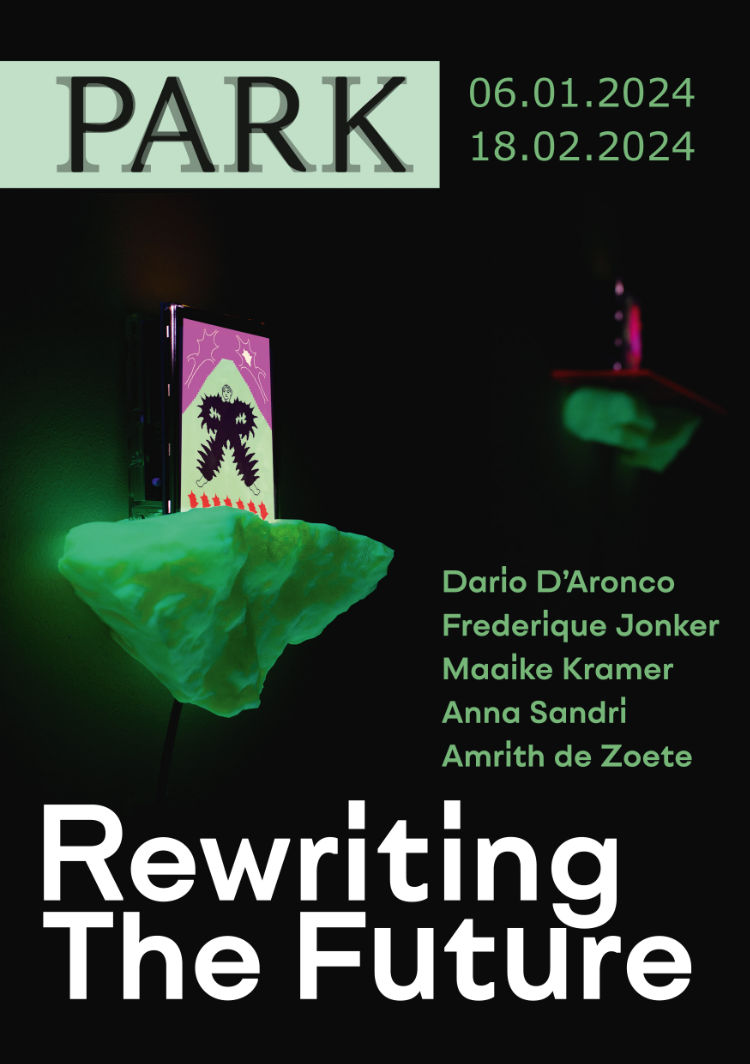
Dario D'Aronco
Frederique Jonker
Maaike Kramer
Anna Sandri
Amrith de Zoete
An exhibition curated by guest curator Niek Hendrix.
In the early nineteenth century, it was fashionable to have a cave or ruin in the garden. There appeared to be a shortage of existing gardens with beautifully fitting structures, and so they were made from, for example, chicken wire and cement. These artificial constructions thus fulfilled a longing for a past that had never taken place.
Over the past 10 years at PARK, much has been shown and, at the same time, a choice has been made not to show things. History thus determines the future. But what if our image of that past is artificial, like the structures from the gardens, can we rewrite the future? 'Rewriting the Future' invites visitors to rethink time and our perception of it, blurring the boundaries between past, present and future.
In his work, Dario D'Aronco (1980) depicts the story of Maria Goretti, patroness of young girls and victims of sexual assault and rape. Growing up near the site of this legend, D'Aronco creates wall sculptures that at first glance appear to be made of bronze, but are in reality 3D-printed assemblies of various objects.
Anna Sandri (1995) is interested in iconographic and narrative patterns related to faith, grace and despair. In the upstairs space, she has created a total installation. Small LCD screens show
pixelated images of saints on glow-in-the-dark pedestals and blacklight.
In her mostly large canvases, Frederique Jonker (1991) works with different materials and techniques interchangeably. She presents an intuitive fusion of painting techniques from different eras. From primitive handprints to airbrush techniques, her work offers a visual journey through time and space.
Maaike Kramer (1986) creates objects on the wall and on the floor. By mixing the properties of seemingly contradictory materials, she creates works that are not what they seem. Maaike Kramer's artificial ruin in PARK also embodies an intuitive approach. Her process from sketch to execution is visible in this fascinating installation.
Through observations inside and outside factories, Amrith de Zoete (1997) copies, recreates and adapts materials and techniques used in manufacturing. He reveals the different layers of the chapel walls of PARK and thus the history of the building itself. The other work will slowly breathe in and out, giving time a new feeling.
The opening will take place on Saturday 6 January 2024 at 4pm. You are most welcome to attend.
On this day, PARK will be open from 3pm.
PARK is open on Friday, Saturday and Sunday from 1 to 5pm and by appointment. Free entrance.
Click here for the exhibition guide (in Dutch).
In the media:
- Lost Painters - 04-01-2024
- Tilburg.com - 04-01-2024
- Stadsnieuws - 06-01-2024
- Make it in Tilburg - 09-01-2024
- Brabants Dagblad / Eindhovens Dagblad - 11-01-2024
- Lost Painters - 08-02-2024